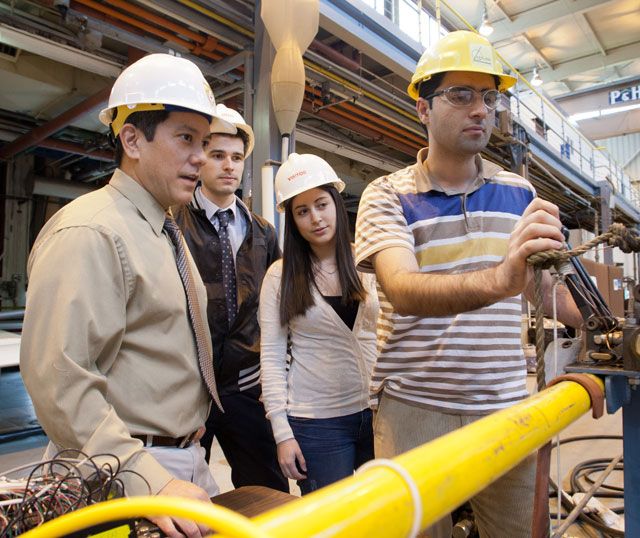Precast concrete is a product that is fabricated in a controlled environment in advance of a construction project and transported to the site when appropriate. It differs from the more traditional method of pouring concrete on site—"cast-in-place" concrete— in that it makes the creation of multiple identical structural members easier and more reliable. The downside: less freedom to create unique members.
Clay Naito, professor of structural engineering, was at a conference at the Precast Concrete Institute when he had an idea: Use 3D printing technologies to enhance what you can do with precast concrete.
"The current method of printing concrete is to build your structure by pumping it out on site like icing in a cake funnel," Naito says. "You can do it quickly, but you can see the layers on the finished product. What I wanted to do was more refined, to get nice details on the surface of the components."
Naito has been using 3D printing as part of his Civil Engineering Materials class, so he knew the technology was available on campus. What surprised him was the amount of interdisciplinary cooperation he was able to find.
He recruited a team of students to begin work through Lehigh’s Mountaintop Initiative. “The academic diversity has been amazing to see. The team is made up of students from civil engineering, mechanical engineering, material science, chemical engineering, chemistry, architecture, and art,” Naito says.
John Fox, assistant professor of environmental engineering, supported the effort based on his experience with binder jet printing, an offshoot of 3D printing. Nik Nikolov, assistant professor of art and architecture, supported the team with optimization of structural shapes.
“Binder-jet is being used industrially right now with sand,” says Naito. “They’re creating large complex sand molds for things like propeller blades and engine parts by forming a thin layer of sand, printing a binding agent at the desired location and repeating,” Naito says. “When it’s done, the sand and binder creates a rigid matrix. You blow away the unbound sand, and you have your mold. We’re trying to do the same with concrete.”
The group ultimately discovered several viable mixes, and they were able to print, but there’s more work to do. “We’re hoping to team with Paolo Bocchini [Frank Hook Assistant Professor of Structural Engineering] to look at the life cycle of some of the structural members we create,” Naito says.

